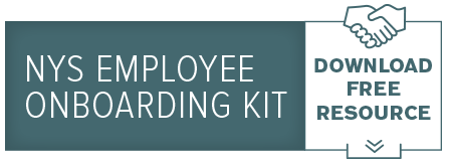Now that your business is achieving success, it’s time to grow your workforce. Should you hire hourly employees for the budget flexibility or should you hire salaried workers for the payroll predictability? What are the laws that might govern your decision? Let’s take a look at the pros and cons of hourly positions and salaried positions.
What is an hourly employee?
Hourly employees are compensated at a set hourly rate. For example, an employee who is paid $10 per hour who works 40 hours in a week would be paid 40 x $10, or $400. Hourly employees are considered “non-exempt”, meaning they are not exempt from receiving overtime pay for hours worked above 40 hours in a week. So if that same employee worked 50 hours one week the compensation would be $400 for the first 40 hours plus 10 x $15 (time and a half), or $150, bringing the total to $550.
Hourly employees are not guaranteed a set number of hours each week, unless covered under a labor contract. Schedules may vary and they may work different shifts. Hourly employees must be paid a minimum wage, which varies from state to state. If the state minimum wage is different from the federal minimum wage, the employer must pay the higher of the two.
What is a salaried employee?
Salaried employees are paid a set minimum amount each year that is divided by the number of pay periods. For example, an employee being paid $50,000 a year being paid twice a month would receive $50,000 / 24, or $2,083.34 each paycheck. Most salaried employees are considered “exempt” from overtime rules and are paid the same regardless of the number of hours worked in a week.
Salaried employees can be classified as non-exempt and receive overtime pay if their salary is less than $455 per week, or $23,660 per year. (The Department of Labor is considering changing the threshold for exemption to $50,440.)
Fair Labor Standards Act Requirements
The rules governing exempt and non-exempt classification of employees are put forth in the Fair Labor Standards Act (FLSA). This federal law outlines the rules for classification and provides stiff penalties for mis-categorizing employees. Most states also have their own laws governing overtime pay that are sometimes more stringent than federal laws, such as in California, Nevada, and Alaska. As you are designing your new position it is a good idea to familiarize yourself with your state’s specific laws by visiting FindLaw.
Under the FLSA, in order for an employee to be classified as exempt they must perform executive, administrative or professional job duties and be paid more than $23,660 per year. (There are exceptions to this exception for employees who make less than $23,660 as researchers working under government or educational grants.)
The Benefits of Hiring Hourly Employees
Hourly employees are generally given a set number of hours and they get paid for the time they work. As long as they work fewer than 40 hours in a week they do not get paid overtime. Employees are generally considered non-exempt until proven otherwise. So hiring an employee on an hourly basis eliminates the need for the employer to prove that the employee qualifies as exempt according to FLSA regulations.
While salaried employees make payroll more predictable, hourly employees make payroll more flexible. They allow your company to better manage your budget during slow times. And in general, employees working fewer than 30 hours per week are considered part-time and don’t meet the qualifications that would require an employer to pay benefits, such as insurance and paid time off. This is another cost savings for your business.
In making the decision whether to hire hourly or salaried employees it is best to consult a payroll specialist to determine how the decision will affect your business and to make sure you are compliant with FLSA and state regulations. If you are ready to talk to the experts, we are here to help!




















 Get Instant Blog Notifications
Get Instant Blog Notifications


